The combatants of World War II all tried to develop new and innovative weapons to attack the enemy, many inventions were successful and of course there were also failures.
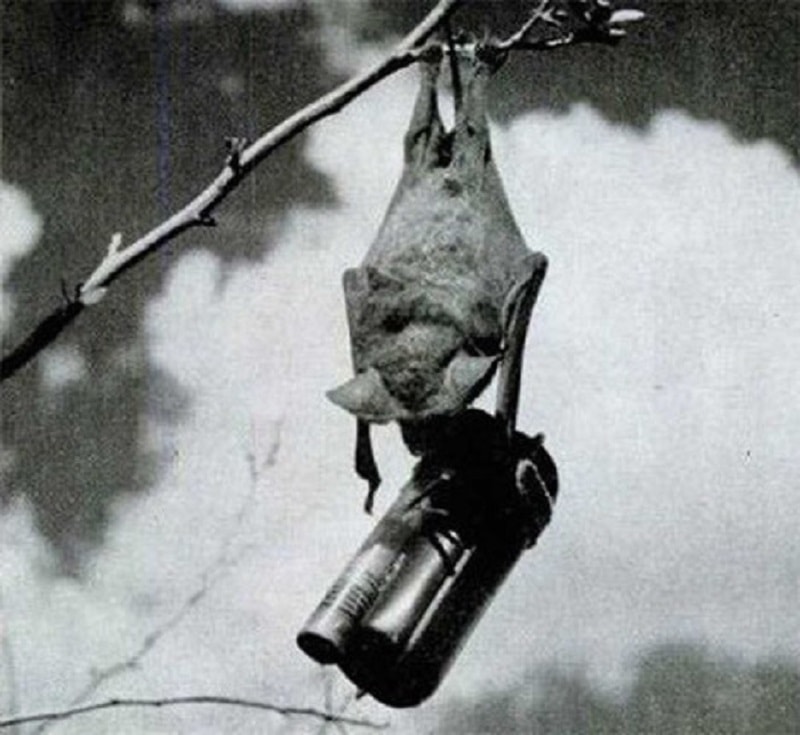
Along with the unprecedented mobilization of brainpower, manpower, and resources, World War II saw the development of many game-changing weapons and technologies, such as new radar and napalm. However, many inventions also turned out to be costly failures.
Bat pump (USA)
In early 1942, Dr. Lytle S. Adams, a surgeon in Pennsylvania, USA, sent a letter to the White House introducing the idea of a weapon that he believed would devastate Japan.
The idea came from a visit to the Carlsbad Caverns in New Mexico. Adams' proposal was to attach incendiary devices to bats and drop them from airplanes.
Among thousands of civilian proposals sent to then-US President Franklin D. Roosevelt, Adams' proposal was given the green light and transferred to the US Army's Chemical Warfare Bureau.
Based on this idea, bats equipped with timed incendiary devices would be released over Japanese cities. The bats would disperse in all directions, landing on the eaves of homes or businesses and causing a firestorm.
Adams pledged that the "bat bomb" would cause greater devastation than the atomic bombs dropped on Hiroshima and Nagasaki but cause fewer civilian casualties.
The US Army and Navy spent millions of dollars and captured thousands of bats in multiple trials to make this crazy idea a reality. However, the project was eventually canceled in 1944.
Wind Cannon (Germany)
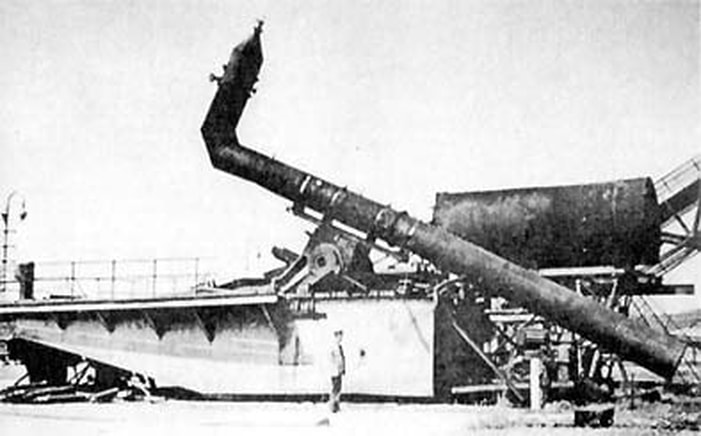
In 1943, the US and British air forces launched a massive bombing campaign against German cities, targeting factories, warehouses and transport hubs. The continuous air raids left the German army facing serious shortages of weapons compared to the Allies.
In response, Adolf Hitler and Propaganda Minister Joseph Goebbels announced the creation of Wunderwaffen (wonder weapons) that would terrify the Allies. The most prominent of these were the giant V-1 and V-2 rockets launched from locations on the European continent to attack targets in London.
"The miracle here was the creation of novel weapons in the context of Germany's depletion of resources such as aluminum, steel and other metals, and they also lacked pilots", said historian John Curatola at the National World War II Museum in Louisiana (USA),"Many of these weapons are the result of desperation."
A typical example is the Windkanone (wind cannon), an anti-aircraft weapon that does not fire bullets but fires a stream of air (compressed nitrogen and hydrogen) to shoot down enemy aircraft.
In tests, the air cannon was able to split a wooden plank in half from a distance of 200 meters. But in its only deployment on a bridge over the Elbe River, Hitler's "wonder weapon" was useless.
Habakkuk Project (UK)
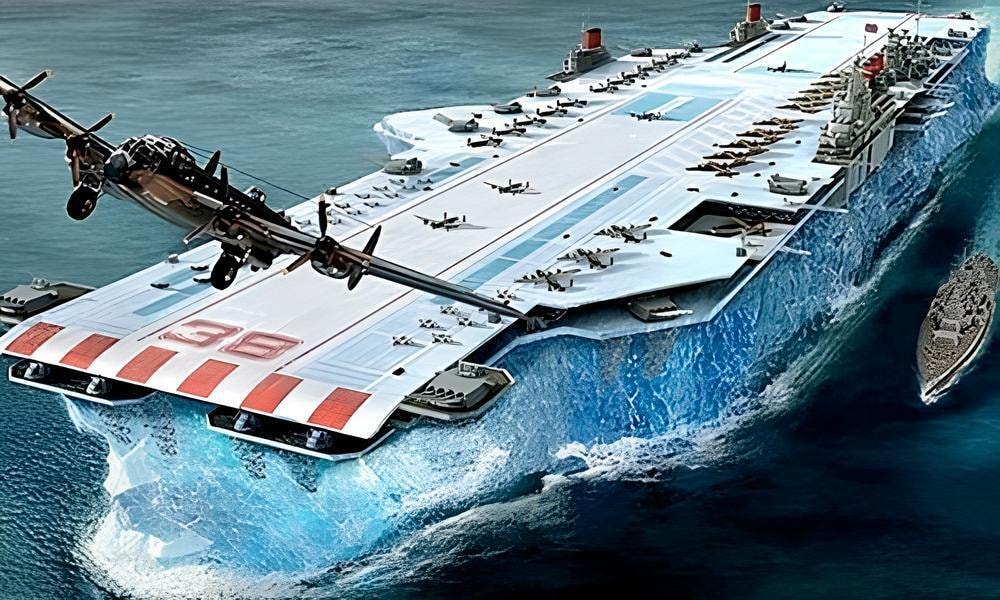
During the early years of World War II, German U-boats wreaked havoc in the North Atlantic, sinking numerous British Navy and civilian vessels. The most vulnerable area was the “Mid-Atlantic Gap,” a stretch of ocean too far from the American or British coasts for reconnaissance aircraft to patrol.
One idea was to park a giant aircraft carrier in the area to serve as a refueling station and launching point for Allied patrol aircraft. However, steel and other resources were scarce at the time, and British inventor George Pyke proposed a solution: a floating airbase made of ice.
With the help of a molecular biologist, George Pyke invented “pykrete,” a bulletproof material made from ice and wood pulp, from which he built the blueprints for Project Habakkuk, a mile-long, 2.2-million-ton supercarrier.
The hull was thick enough to withstand torpedoes, and the hollow interior could accommodate aircraft and smaller ships. If damaged, the ship could be easily repaired with ice.
A 1,000-ton scale model has been built and tested on a lake in Alberta, Canada. However, by the time the ice supership is fully tested, its technology will be obsolete as the range of aircraft has increased dramatically.
The Habakkuk's construction cost of around $2.5 million (equivalent to $32 million today) was deemed too expensive. The project was eventually cancelled.
Mouse Bomb (UK)
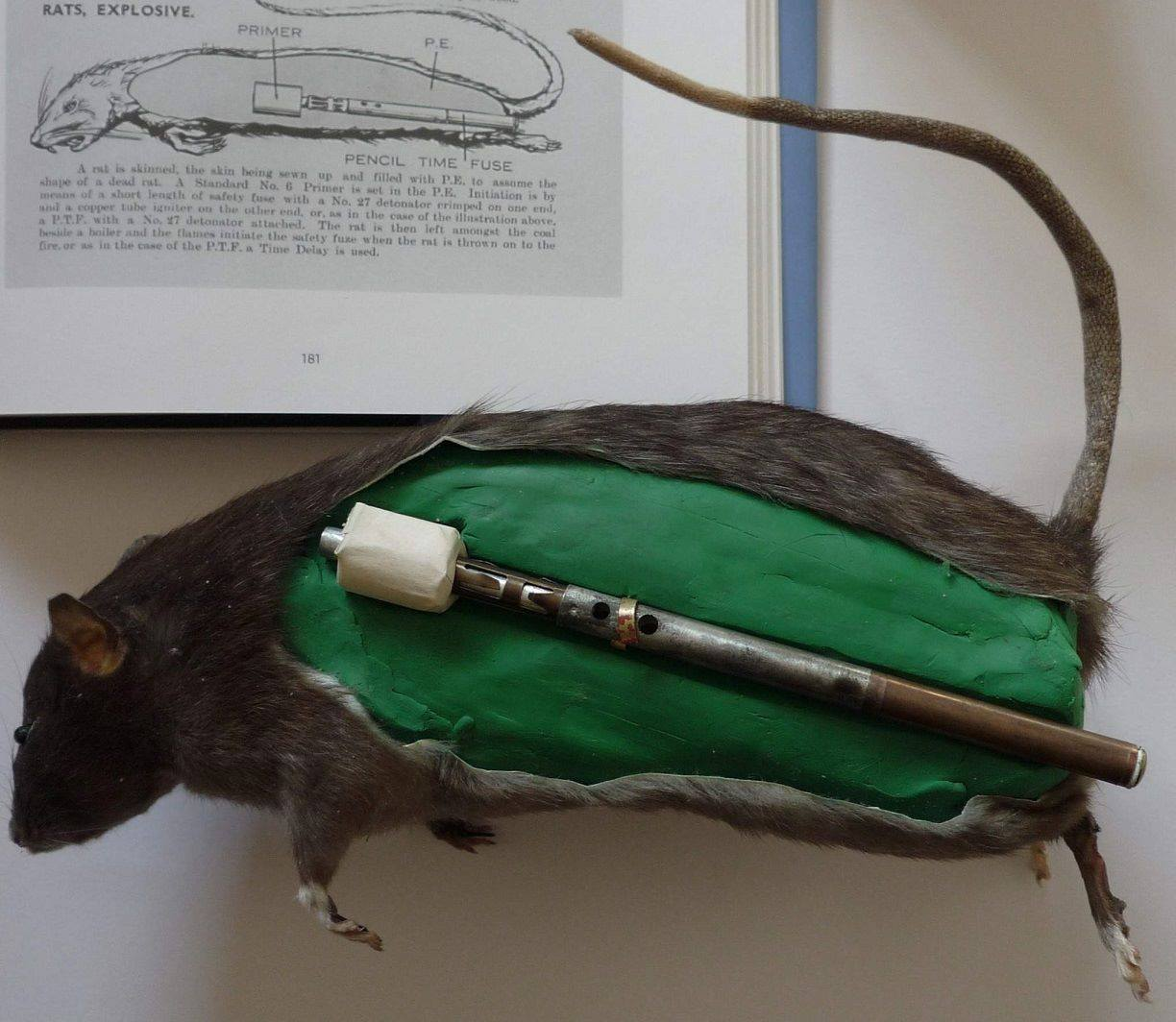
The British Special Operations Executive (SOE) during World War II hid explosives inside everything they could, including Chianti bottles, Balinese wood carvings, and even dead rats.
SOE agents in London collected 100 dead rats and stuffed them with explosives, then sent them to agents in German-occupied France. The French agents planned to place the rats near factory boilers and on ships, with the intention of unsuspecting German soldiers throwing the rats into the boilers, triggering massive explosions.
However, the idea failed when the German army intercepted the package of dead rats and sent samples to German military schools, warning cadets to be on the lookout for explosive rodents. However, in an SOE report, the agency concluded that the mission had succeeded in influencing German morale, spreading panic about rat bombs even though none had ever happened.
Panjandrum Wheel
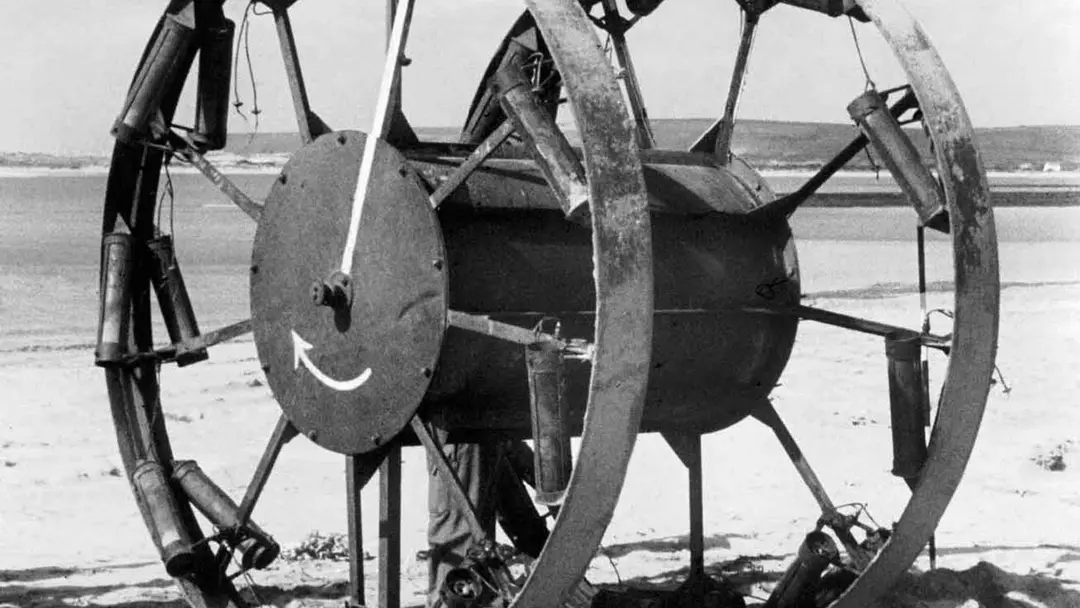
The D-Day landings on June 6, 1944, had been years in the making. While the Allies planned a massive amphibious assault on Normandy, France, called “Operation Overlord,” the Germans built hundreds of miles of fortified positions, minefields, and fortifications known as the “Atlantic Wall.”
The Allies created a variety of new weapons and technologies to breach the Atlantic Wall and push deep into Normandy, including a special tank group known as the “Hobart Funnies.” Some Funnies were equipped with rotating shafts that safely detonated mines, while others could bypass anti-tank fortifications using road-laying and bridge-building equipment.
Not all D-Day inventions were successful, however. One example was the Panjandrum, a metal wheel powered by a rocket and loaded with explosives. These unmanned wheels would be launched from a landing craft, speed up the shore, hit a wall or gun emplacement, and explode.
However, the rudimentary guidance equipment at the time meant that the Panjandrums could not reach their intended targets. The Panjandrum tests in 1943 and 1944 were disastrous failures, and the rocket wheel was also dropped from the D-Day plans.
Anti-tank dog (Soviet Union)
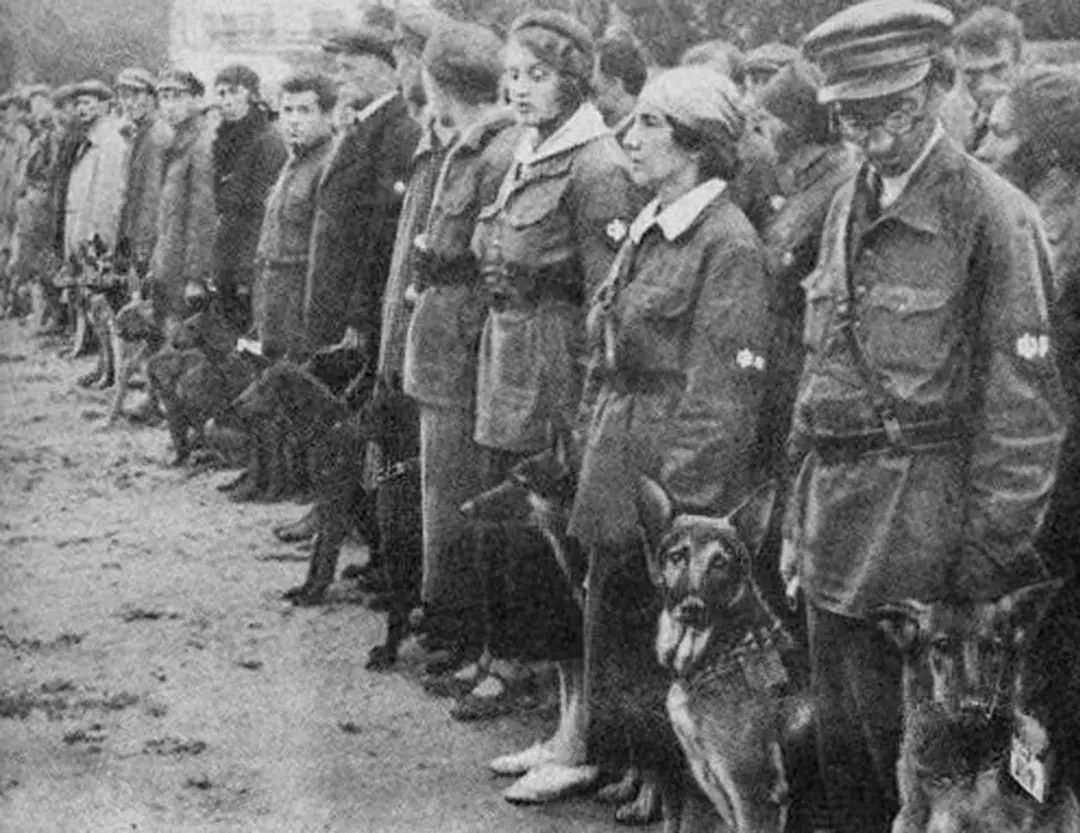
At the beginning of World War II, the Soviet army trained dogs to drop suicide bombs on German tanks.
The dogs were equipped with backpacks containing several pounds of explosives and a lever protruding from the backpack. When the dog charged under the tank, the lever would be pushed down and the explosives would be detonated.
Up to 40,000 Soviet anti-tank dogs were trained to carry out the sacrificial mission, but very few achieved their goal because the German army simply shot down any dog found on the battlefield.
Krummlauf curved barrel gun
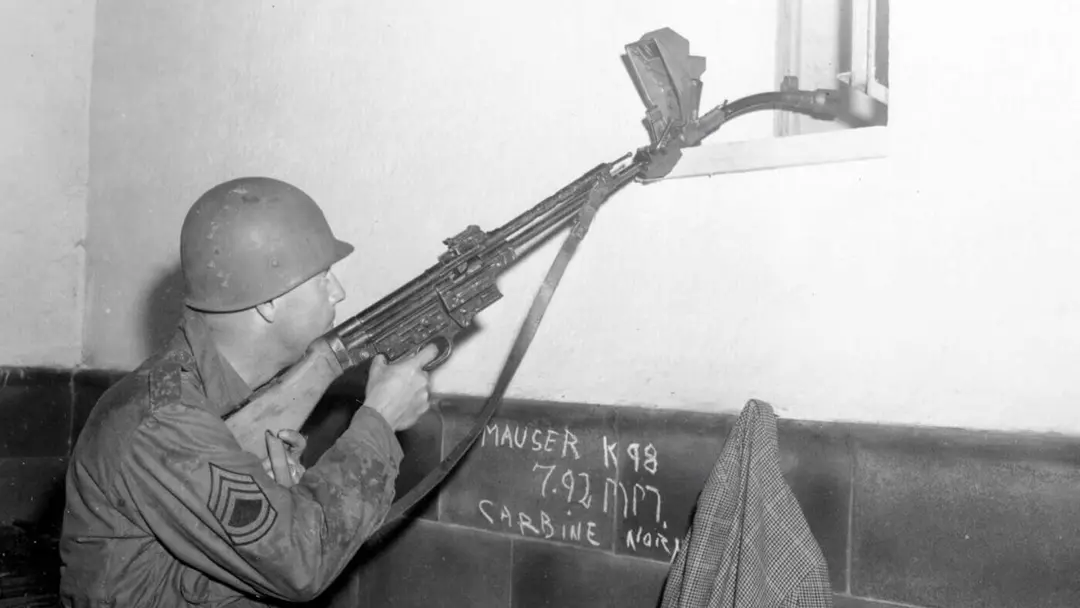
Krummlauf is a curved barrel attachment for the Sturmgewehr 44 rifle developed by Germany during World War II.
There are two versions of the Krummlauf: one with a 30-degree curve for firing over or around obstacles, and one with a 90-degree curve for firing from inside armored vehicles. The Krummlauf is equipped with a set of mirrors to help soldiers aim at enemies at blind spots.
The Americans, after capturing German weapons, conducted tests on the Krummlauf and found poor results. The bullets would break in half when ricocheting through the curved barrel, greatly reducing the weapon's range and accuracy. The barrel itself would also break in half after a few hundred shots.
VN (according to VTC News)